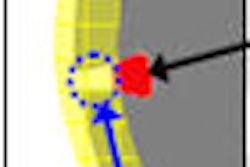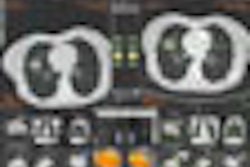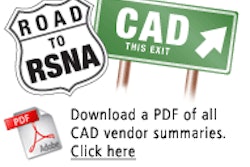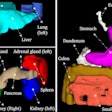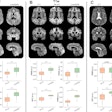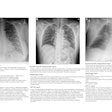The impact of advanced visualization continues to be felt in radiology, permeating a range of subspecialties and applications. As 3D and computer-aided detection (CAD) continue to move toward becoming mainstream technologies, a number of scientific papers at this year's RSNA meeting in Chicago will speak to their growing utility.
3D's ability to add clinical value will be showcased in a number of areas, while the body of evidence showing CAD's ability to increase cancer detection continues to accumulate.
Of course, no technology is perfect, and a number of papers will address the dilemma of why radiologists occasionally ignore true-positive CAD marks. Gaining insight into this problem will allow for users to get the maximum value out of this valuable tool.
See below for a preview of a number of advanced visualization-related scientific papers and educational exhibits slated for the 2009 RSNA meeting.
Refresher courses
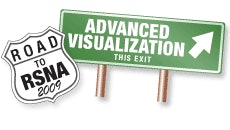
A Friday, December 4, course will review organ segmentation, 3D for education, and the use of enterprise 3D tools to enhance radiology practices (8:30 a.m.-10:00 a.m., RC830, Room E353A). A number of hands-on 3D workshops will also be held throughout the week.
Those new to the CAD field might appreciate a Sunday, November 29, minicourse (2:00 p.m.-3:30 p.m., RC123, Room S504CD) that will provide a general introduction and short history of CAD in radiology, as well as discuss engineering aspects of CAD technology. Also on Sunday, the third talk in a mammographic interpretation refresher course (2:00 p.m.-3:30 p.m., RC115, Room E451B) will explore the true value of mammography CAD.
On Monday, November 30, another minicourse will review the "hope, hype, and hard truth" about CAD in breast and lung imaging (8:30 a.m.-10:00 a.m., RC223, Room S504CD). The same "hope, hype, and hard truth" theme will be continued on Tuesday, December 1 -- this time addressing the clinical reality of these systems (8:30 a.m.-10:00 a.m., RC323, Room S504CD).
The final refresher course in this series will be held on Tuesday afternoon and will cover CAD applications in colonography and beyond, with presentations on CAD for colon cancer, emerging applications, and a look into the future (4:30 p.m.-6:00 p.m., RC423, Room S504CD).
A glimpse into the use of CAD for the liver, brain, musculoskeletal system, and other body parts will be given during a Wednesday, December 2, refresher course (8:30 a.m.-10:00 a.m., RC530, Room S403B). Also, the application of CAD in breast tomosynthesis will be covered in the first talk of a Thursday, December 3, categorical course (4:30 p.m.-6:00 p.m., RC725, Room S502AB).
Below are highlights of some of the more intriguing advanced visualization papers scheduled for presentation at this year's RSNA meeting. To view the RSNA's Web site listing abstracts for this year's scientific and educational programs, just click here.





